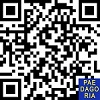PENGEMBANGAN ALAT PRAKTIKUM FISIKA BERBASIS DIGITAL VOICE EQUIPMENT UNTUK ANAK TUNANETRA DI SLB KOTA LUBUKLINGGAU
Abstract
Abstrak: Penelitian ini dilatarbelakangi oleh permasalahan bahwa tidak semua anak berkebutuhan khusus mendapatkan alat praktikum fisika untuk membantu siswa memahami materi fisika dengan baik. Oleh karena itu tujuan dari penelitian ini adalah agar anak berkebutuhan khusus dapat memahami materi pembelajaran IPA khususnya fisika dengan menggunakan alat praktikum fisika berbasis peralatan digilat voice equipment (suara). Jenis penelitian ini adalah penelitian dan pengembangan dengan model 4D (Four D Model) yang meliputi tahapan Defaine (penafsiran), Design (perencanaan), Develop (pengembangan) dan Deseminate (penyebaran) yang di implementasikan dalam bentuk penelitian quasi eksperimen dengan desain one group pretest-posttest research. Intrumen penelitian ini berupa: 1) validas ahli, 2) angket respon siswa dan 3) tes Teknik analisis data untuk validasi ahli dan angket respon siswa dianalisis menggunakan skala likert yaitu dengan memberi skor 1 sampai 4 kemudian hasilnya dianalisis untuk mencari rata-rata penilaian dan presentasenya untuk menyimpulkan hasil penilaian. Sedangkan untuk hasil tes digunakan uji n-gain untuk melihat kenaikan hasil belajar siswa. Hasil Penelitian diketahui bahwa validasi ahli dan respon siswa mendapatkan penilaian pada kategori sangat baiak dengan presentase 91,5% dan 85,71%. Sedangkan pada analisis n-gain untuk pembeljaran dengan menggunakan alat praktikum fisika berbasis digital voice equipment (Suara) dalam pembelajaran IPA-fisika mengalami peningkatan hasil belajar yang signifikan. Peningkatan hasil belajar tersebut dapat dilihat dari nilai n-gain yaitu sebesar 0,54 atau 54% dari nilai maksimum 100.
Abstract: This research was motivated by the problem that not all children with special needs get physics practicum tools to help students understand physics material well. Therefore, the purpose of this study is so that children with special needs can understand learning materials, especially physics, by using physics practicum tools based on voice equipment. This type of research is research and development with a 4D model (Four D Model), which includes the stages of Defaine (interpretation), Design (planning), Develop (product), and Deseminate (deployment), which is implemented in the form of quasi-experimental research with one group pretest-posttest research design. This research instrument is in the form of 1) expert validity, 2) student response questionnaires, and 3) tests. Data analysis techniques for expert validation and student response questionnaires are analyzed using the Likert scale, namely by giving a score of 1 to 4, then the results are analyzed to find the average assessment and percentage to conclude the assessment results. As for the test results, an n-gain test is used to see the increase in student learning outcomes. The study results found that expert validation and student responses received assessments in the perfect category with 91.5% and 85.71% percentages. Meanwhile, the n-gain analysis for learning using digital voice equipment-based physics practicum tools in science-physics learning experienced a significant increase in learning outcomes. The increase in learning outcomes can be seen from the n-gain value, which is 0.54 or 54% of the maximum value of 100.Keywords
Full Text:
PDFReferences
Abdin, M., & Tetelepta, J. M. (2021). Faktor Penghambat Pemenuhan Hak Pendidikan Disabilitas di Kota Ambon. Jurnal Kewarganegaraan, 18(2), 92. https://doi.org/10.24114/jk.v18i2.26957
Arkadiantika, I., Ramansyah, W., Effindi, M. A., & Dellia, P. (2020). Pengembangan Media Pembelajaran Virtual Reality Pada Materi Pengenalan Termination Dan Splicing Fiber Optic. Jurnal Dimensi Pendidikan Dan Pembelajaran, 8(1), 29. https://doi.org/10.24269/dpp.v0i0.2298
Bao, L. (2006). Theoretical comparisons of average normalized gain calculations. American Journal of Physics, 74(10), 917–922. https://doi.org/10.1119/1.2213632
Borg, W. R., Gall, M. D., & Gall, J. P. (2003). Educational Research An Introduction. In Boston:Pearson.
Camalia, F., Zusanto, H., & Susilo. (2016). Pengembangan Audiobook Dilengkapi Alat Peraga Materi Getaran Dan Gelombang Untuk Tunanetra Kelas. UPEJ Unnes Physics Education Journal, 5(2), 66–75.
Fajrie, N., & Masfuah, S. (2018). Model Media Pembelajaran Sains untuk Anak Berkebutuhan Khusus ( ABK ). Jurnal Bagimu Negeri, 2(1), 9–19.
Firmansyah, D., & Dede. (2022). Teknik Pengambilan Sampel Umum dalam Metodologi Penelitian: Literature Review. Jurnal Ilmiah Pendidikan Holistik (JIPH), 1(2), 85–114. https://doi.org/10.55927/jiph.v1i2.937
Iradaty, F. (2017). Peraga Mikrometer Sekrup Braille untuk Siswa Tunanetra. Inklusi, 4(1), 71. https://doi.org/10.14421/ijds.040104
Kang, Q., Chen, G., Lu, J., & Yu, H. (2016). Health Disparities by Type of Disability : Health Examination Results of Adults ( 18-64 Years ) with Disabilities in Shanghai , China. PLOS ONE, 1–13. https://doi.org/10.1371/journal.pone.0155700
Maryanti, R., Bayu, A., Nandiyanto, D., Hufad, A., & Sunardi, S. (2021). Indonesian Journal of Community and Science Education for Students with Special Needs in Indonesia : From Definition , Systematic Review , Education System , to Curriculum. Indonesian Journal of Community and Special Needs Education, 1(1), 1–8.
Nurfadillah, S., Erdian, A. E., Marcelino, R., Widyastuti, T., Afianti, N. A., Sabila, R., Yanti, A. A., & Efendi, H. (2022). Analisis Implementasi Assesment Pada Pembelajaran Inklusi Di Sdn Cibodas 1 Kota Tangerang. Jurnal Pendidikan Dan Sains, 2(November), 705–723.
Palmer, T. A., Burke, P. F., & Aubusson, P. (2017). Why school students choose and reject science: a study of the factors that students consider when selecting subjects. International Journal of Science Education, 39(6), 645–662. https://doi.org/10.1080/09500693.2017.1299949
PPK-LK, D. (2011). Pedoman Umum Pedoman Umum Penyelenggaraan Pendidikan Inklusif (Issue 70).
Pratiwi, S. N., Cari, C., & Aminah, N. S. (2019). Pembelajaran IPA Abad 21 dengan Literasi Sains Siswa. Jurnal Materi Dan Pembelajaran Fisika, 9, 34–42.
Rahman, D., Adlim, & Mustanir. (2015). Analisis kendala dan alternatif solusi terhadap pelaksanaan praktikum kimia pada SLTA negeri Kabupaten Aceh Besar. Jurnal Pendidikan Sains Indonesia, 3(2), 1–13. http://jurnal.unsyiah.ac.id/jpsi
Ratu, T., & Erfan, M. (2018). Pengaruh Penggunaan Alat Peraga Berbasis Problem Solving Terhadap Keterampilan Psikomotorik Dan Penguasaan Konsep Siswa Tunanetra. Jurnal Riset Kajian Teknologi Dan Lingkungan, 1(2), 101–105. http://www.e-journallppmunsa.ac.id/index.php/jrktl/article/view/50
SAPUTRO, S. D., TUKIRAN, SUPARDI, Z. A. I., & JATMIKO, B. (2020). Conceptual framework of critical thinking skills for work and energy tests applied to physics learning. Periodico Tche Quimica, 17(36), 798–815. https://doi.org/10.52571/ptq.v17.n36.2020.813_periodico36_pgs_798_815.pdf
Sharma, U., Forlin, C., Deppelera, J., & Guang-xue, Y. (2013). Reforming Teacher Education for Inclusion in Developing Countries in the Asia-Pacific Region. Asian Journal of Inclusive Education, 1(1), 3–16. http://www.researchgate.net/publication/236120043_Reforming_Teacher_Education_for_Inclusion_in_Developing_Countries_in_the_Asia-Pacific_Region/file/3deec51628f5e294c4.pdf
Siahaan, M. K. (2022). Education For Children With Special Needs. THE EXPLORA, 2, 14–27.
Starks, A. C., & Reich, S. M. (2023). “What about special ed?“: Barriers and enablers for teaching with technology in special education. Computers and Education, 193(September 2022). https://doi.org/10.1016/j.compedu.2022.104665
Widyastuti, S. R., Nahdlatul, U., Cirebon, U., & Autentik, P. (2022). Pendahuluan Pendidikan di Indonesia menerapkan sistem penilaian autentik disesuaikan dengan Kurikulum 2013 ( Permendikbud No . 54 Tahun 2013 ). Penilaian autentik tanggapan pilihan namun lebih mengerjakan tugas , mengadaptasi dari dunia nyata Menengah Per. ASWAJA, 3(2), 57–76.
Yunomo & Utomo. (2021). Buku Pendidikan Inklusi. In Deepublish (Vol. 1999, Issue December).
DOI: https://doi.org/10.31764/paedagoria.v14i3.16189
Refbacks
- There are currently no refbacks.
Copyright (c) 2023 Eka Maryam

This work is licensed under a Creative Commons Attribution-ShareAlike 4.0 International License.
Paedagoria : Jurnal Kajian, Penelitian dan Pengembangan Kependidikan
Fakultas Keguruan & Ilmu Pendidikan | Universitas Muhammadiyah Mataram.
_______________________________________________
 | Paedagoria : Jurnal Kajian, Penelitian dan Pengembangan Kependidikan |
______________________________________________
CURRENT INDEXING:
EDITORIAL OFFICE:


















